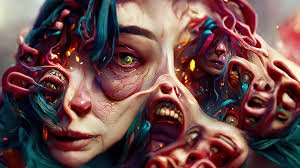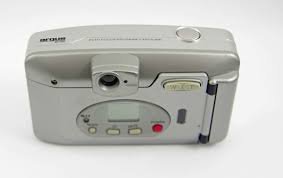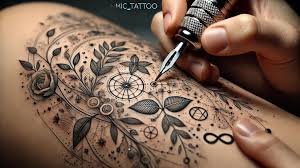AI Art Horror IV Needles: A Deep Dive into Digital Nightmares
AI Art Horror IV Needles: A Deep Dive into Digital Nightmares

Introduction: What Is AI Art Horror IV Needles?
Artificial intelligence has taken the creative world by storm, generating everything from photorealistic portraits to imaginative landscapes. Among these experiments lies a disturbing and fascinating niche—AI art horror IV needles. This artistic theme blends medical visuals, particularly IV drips and needles, with horror aesthetics. The outcome is haunting imagery that unsettles viewers while showcasing the vast capabilities of AI-driven creativity.
Unlike typical digital art, this genre focuses on primal fears: medical procedures, sharp objects, and vulnerability. By exaggerating these elements, AI produces visuals that feel both surreal and terrifyingly real.
How AI Horror Art Evolved
AI-generated horror has gained traction with the rise of platforms such as Stable Diffusion, MidJourney, and DALL·E. At first, creators focused on haunted houses, ghosts, and dark atmospheres. But as experimentation grew, niche subgenres like AI art horror IV needles emerged.
Needles already carry strong associations with pain and illness. When reimagined through the lens of AI, they become symbols of menace—giant, mechanical, or infused with unnatural fluids. This ability to twist everyday objects into nightmare fuel sets AI horror apart from traditional illustration.
The Psychological Fear of Needles
One reason IV needles in horror art resonate so strongly is the universal discomfort they evoke. For many, injections trigger unease or outright phobia. Psychologists attribute this fear to several factors:
-
Pain anticipation – even a small prick causes anxiety.
-
Loss of control – being hooked up to an IV reminds us of dependence.
-
Association with illness – needles bring memories of hospitals and vulnerability.
AI takes these associations and amplifies them. A simple IV bag might become filled with black ink, strange organisms, or glowing substances, turning ordinary medical imagery into something monstrous.
What Makes AI Art Horror IV Needles Unique
Unlike painted or photographed horror, AI-generated works combine hyperrealism with surreal distortion. The result is imagery that feels both authentic and otherworldly. Common visual features include:
-
Endless tubes replacing veins.
-
Oversized syringes piercing into surreal landscapes.
-
Human figures merging with IV stands.
-
Fluids that glow, swirl, or move unnaturally.
This blend of realism and fantasy creates an unsettling tension—the viewer knows it’s artificial but cannot dismiss its disturbing familiarity.
Ethical Concerns Around AI Horror Creations
While AI art horror IV needles fascinates digital artists, it raises important ethical questions:
-
Triggering Phobias – Unwitting viewers may experience real distress when exposed to such imagery.
-
Originality Debate – Since AI relies on training data, critics argue about whether these creations are truly “art.”
-
Accessibility – Unlike traditional artists who refine skills over years, AI lowers the barrier, meaning anyone can produce intense horror visuals. This democratization can be positive but also controversial.
Balancing creativity with responsibility remains a key challenge for AI art communities.
Where This Subgenre Appears
The use of AI horror imagery with IV needles is expanding across creative fields:
-
Video games – Indie developers use AI-generated medical horror settings for atmosphere and inspiration.
-
Film production – Directors experiment with AI to brainstorm terrifying set concepts.
-
Social media art pages – Dark digital art communities thrive on surreal and disturbing visuals.
-
Therapeutic confrontation – Some phobia therapy models suggest controlled exposure to imagery (including AI art) may help people desensitize to fears like needles.
These applications prove the versatility of this unsettling genre.
How to Create AI Art Horror IV Needles Yourself
If you’re curious about trying your hand at this style, you can create horror-themed imagery with AI tools. Here’s a quick guide:
-
Pick a tool – MidJourney, Stable Diffusion, or DALL·E.
-
Write descriptive prompts – Example: “dark hospital room, oversized IV needles, surreal horror lighting, human veins merging with tubes.”
-
Experiment with variations – Adjust words like “hyperrealistic,” “cinematic lighting,” or “nightmare aesthetic.”
-
Refine outputs – Many AI results look strange; refining prompts helps capture the exact eerie effect you want.
This creative process allows anyone to explore the unsettling world of AI art horror IV needles without formal art training.
The Future of AI Horror Art
Looking forward, AI will likely push horror art further into immersive spaces. With the rise of VR and AR, viewers might one day step inside fully interactive AI horror environments featuring IV imagery—walking through hospitals that morph into surreal nightmares.
Artists may also mix horror with other genres, creating works that balance terror with beauty. For example, glowing IV tubes could double as futuristic neon art, blurring the line between horror and sci-fi.
Conclusion
The realm of AI art horror IV needles illustrates how artificial intelligence reshapes the boundaries of creativity and fear. By merging unsettling medical imagery with surreal horror, AI generates visuals that evoke both fascination and discomfort.
This niche might not appeal to everyone, but it undeniably captures attention, revealing the psychological impact of horror when filtered through technology. As AI tools advance, the imagery will become even more vivid, forcing us to confront fears in new and unexpected ways.
Whether appreciated as a form of digital expression or criticized for its intensity, one thing is certain: AI horror art with IV needles has carved a unique space in the evolving world of creativity.





